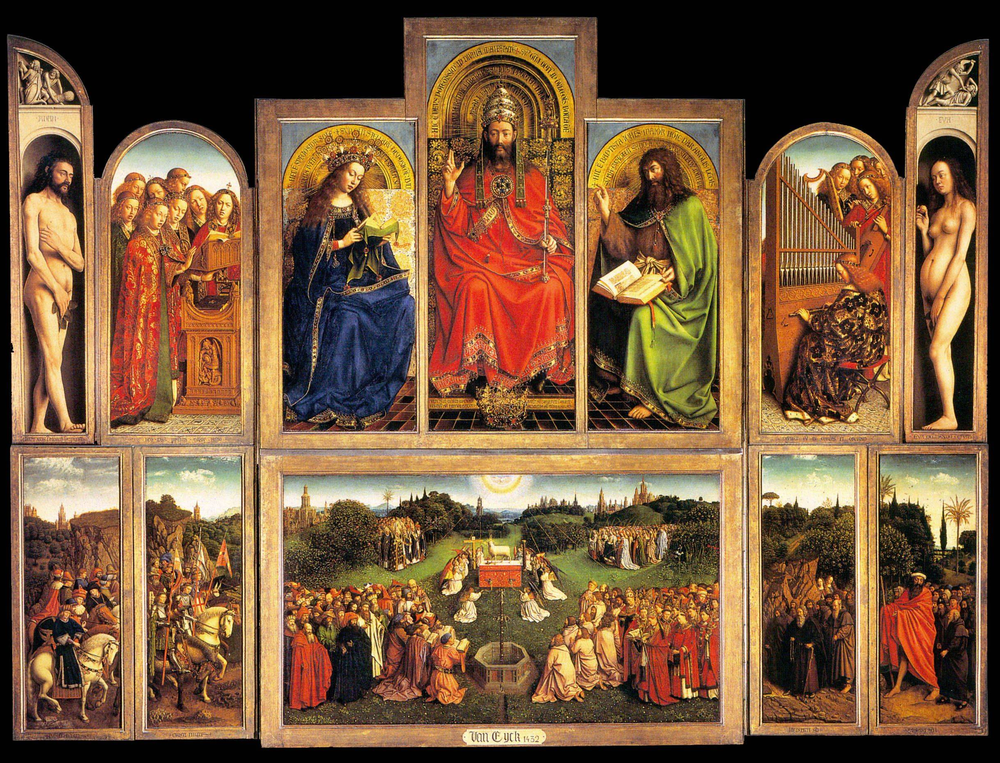The Ghent Altarpiece

The Ghent Altarpiece, also known as the "Adoration of the Mystic Lamb," is a highly renowned and complex polyptych (multi-panelled) altarpiece created by the Early Netherlandish painters Hubert and Jan van Eyck. It is celebrated for its intricate detail, stunning realism, and significant role in the development of Northern Renaissance art. The Ghent Altarpiece was commissioned by Jodocus Vijd and his wife, Elisabeth Borluut, for the Saint Bavo's Cathedral in Ghent, Belgium. Brothers Hubert and Jan van Eyck were responsible for its creation and although Hubert van Eyck began the work, he died in 1426 before completing it. His younger brother, Jan van Eyck, finished the altarpiece.
The altarpiece consists of multiple panels that can be opened and closed to reveal different scenes. When opened, it displays several episodes from the Bible, including the Adoration of the Lamb of God, various saints, angels, and biblical figures. The central panel shows the Lamb of God standing on an altar, symbolizing Christ's sacrifice. Surrounding the Lamb are various figures, including angels, prophets, and martyrs. The entire composition is teeming with intricate details that invite contemplation and reflection.

